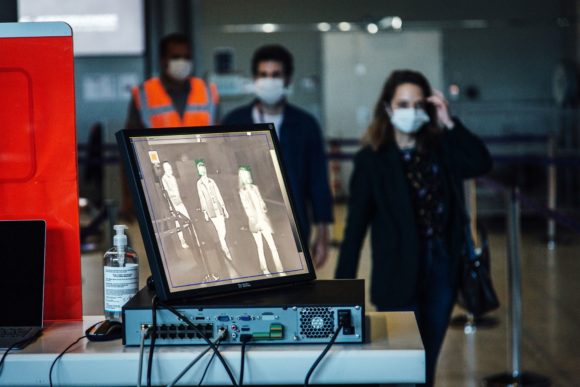Travelers returning to flying after coronavirus lockdowns ease can expect a very different experience than before the pandemic hit.
The International Civil Aviation Organization has issued guidelines to regulators and operators on how to restart the global air-transport system. The group, a specialized agency of the United Nations, recommends more automation and touch-free equipment in airport bathrooms. Travelers may have to get used to electronic visa forms, dropping their baggage off with a facial or iris scan and being searched while facing away from border agents.
Addressing passengers’ safety concerns will be a vital step in ensuring the return to the skies that airlines are counting on to survive. Industry experts say the key will be coordinating efforts globally in order to avoid conflicting regulations that have followed previous travel stoppages, most notably after 9/11.
The International Air Transport Association, which represents airlines, called for “urgent implementation” of the ICAO guidance.
“Airlines strongly support it,” Alexandre de Juniac, head of IATA, said in a statement. “Now we are counting on governments to implement the recommendations quickly, because the world wants to travel again and needs airlines to play a key role in the economic recovery.”
The ICAO recommendations include:
- Staff and passengers wearing masks where available
- Contact-free technology at bag drops, boarding gates and retail outlets, and self-cleaning screens at check-in kiosks
- Regular cleaning of infrastructure and equipment
- One-meter distancing where possible throughout airports
- Revisions to boarding processes, gate areas and government regulations. Changes to border-control and customs processes to increase physical distancing
- Dedicated baggage carousels for arrivals from high-risk areas
Airports Council International said it welcomed the ICAO report.
“While ACI World believes there is currently no single measure that could mitigate all the risks of restarting air travel, the harmonization of any new processes and procedures represents the most effective way of balancing risk mitigation with the need to unlock economies and to enable travel,” said the group, which represents airports.
Was this article valuable?
Here are more articles you may enjoy.


 Tesla, EEOC Plan Talks to Settle Factory Racism Suit
Tesla, EEOC Plan Talks to Settle Factory Racism Suit  Allianz Built An AI Agent to Train Claims Professionals in Virtual Reality
Allianz Built An AI Agent to Train Claims Professionals in Virtual Reality  Munich Re: Insured Losses From Wildfires, Storms and Floods Hit Record High
Munich Re: Insured Losses From Wildfires, Storms and Floods Hit Record High  JPMorgan Wins Gender Pay Gap Dispute Against London Analyst
JPMorgan Wins Gender Pay Gap Dispute Against London Analyst 